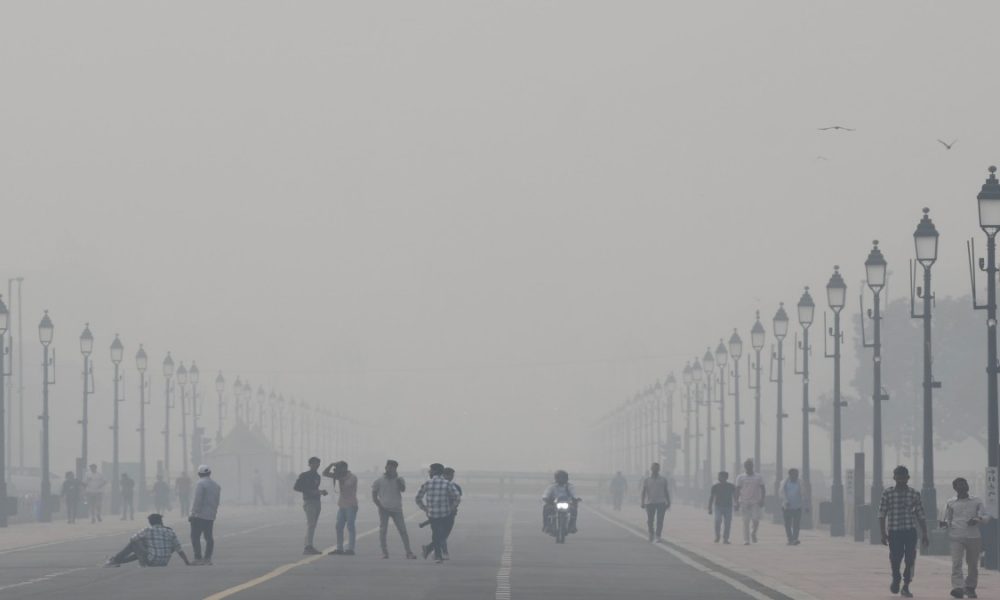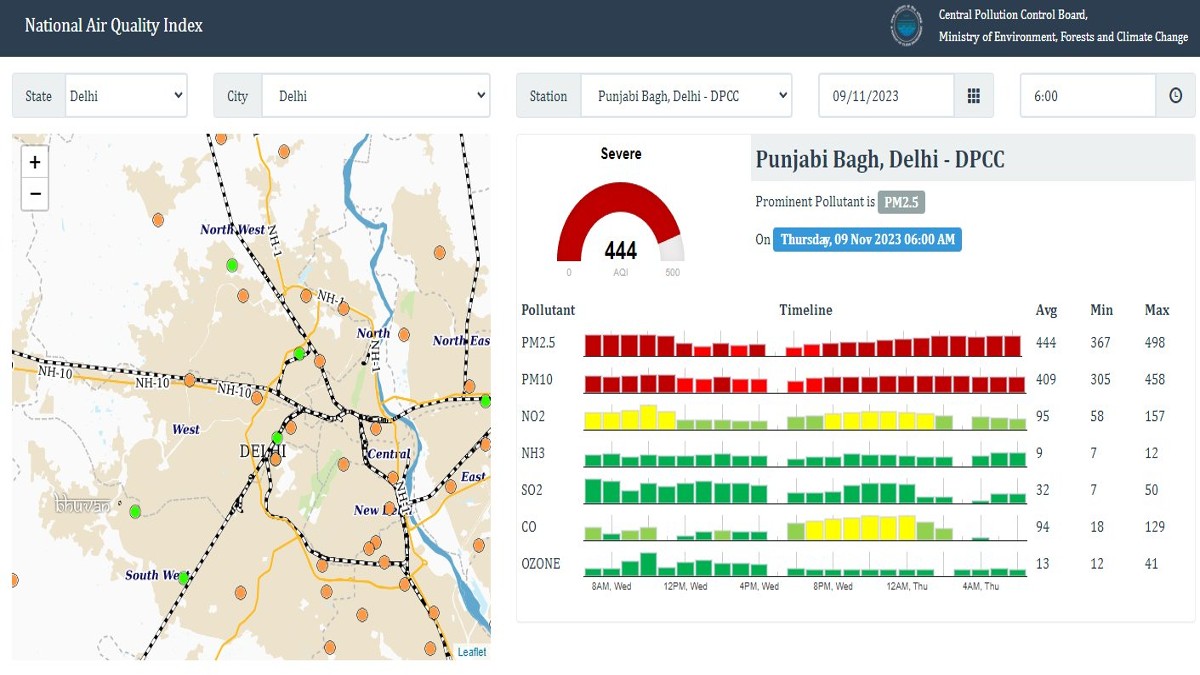
New Delhi: The overall Air Quality Index (AQI) in the National Capital continues to be in the ‘severe’ category, as per the data from the Central Pollution Control Board (CPCB).
Toxic smog continued to persist over several parts of the city on Thursday morning.

According to the data issued by the System of Air Quality Forecasting and Research (SAFAR-India), AQI in Anand Vihar was recorded at 432 (severe category), while RK Puram area the AQI stood at 453 (severe category).

Similarly, the air quality at Punjab Bagh was recorded at 444 (severe), while ITO stands at 441 (severe category).
“The pollution is very high. Everyone is facing problems. We are experiencing a burning sensation in our eyes,” a local in the Connaught Place area said.
“The pollution is causing a lot of problems. There is difficulty in breathing and the government should do something,” another resident said while speaking to ANI.
#WATCH | Delhi: Sprinkling of water being done in the Lodhi Road area by New Delhi Municipal Council, as a measure against the rise in Air Quality Index (AQI) in the city. pic.twitter.com/WLh0MxIx6T
— ANI (@ANI) November 9, 2023
The Supreme Court on Tuesday expressed grave concern over the hazardous air quality in the national capital and directed that farmers should stop stubble burning forthwith in Punjab, Haryana, and western Uttar Pradesh, saying it was one of the major contributors to air pollution.
It also observed that schemes like odd-even for vehicles to tackle pollution issues mere optics.
Delhi government on Monday decided to reintroduce the odd-even rule from November 13 to 20 in view of the concerns of deterioration in air quality. A decision on further extending the odd-even rule would be taken later.
According to the 8-point action plan, there will be a ban on entry of truck traffic into Delhi (except for trucks carrying essential commodities/ providing essential services and all LNG/ CNG/ electric trucks).
#WATCH | Delhi air quality continues to remain in the ‘severe’ category as per the Central Pollution Control Board
(Visuals from Connaught Place, shot at 7:00 a.m. today) pic.twitter.com/4t8qnRoyY1
— ANI (@ANI) November 9, 2023
Meanwhile, Noida and Ghaziabad district administrations have decided to discontinue all physical classes in schools till Friday in view of the worsening air quality conditions.
The administration suggested schools that they conduct classes in online mode.
Air pollution levels can be high during the winter months for a number of reasons, including dust and vehicular pollution, dry-cold weather, stubble burning, burning crop residues after the harvest season, and commuting.
#WATCH | On Delhi pollution, a local resident says, “The pollution is causing a lot of problems…There is difficulty in breathing and the government should do something…” pic.twitter.com/ryO8nFT1qU
— ANI (@ANI) November 9, 2023
Cold air is denser and moves slower than warm air, so it traps pollution and doesn’t whisk it away. This means that air pollution in winter remains in place for much longer than during the summer.
According to doctors, for any healthy person, a recommended AQI should be less than 50, but these days the AQI has spiked beyond 400, which could prove fatal for those suffering from lung-related diseases and even pose a risk of lung cancer.




